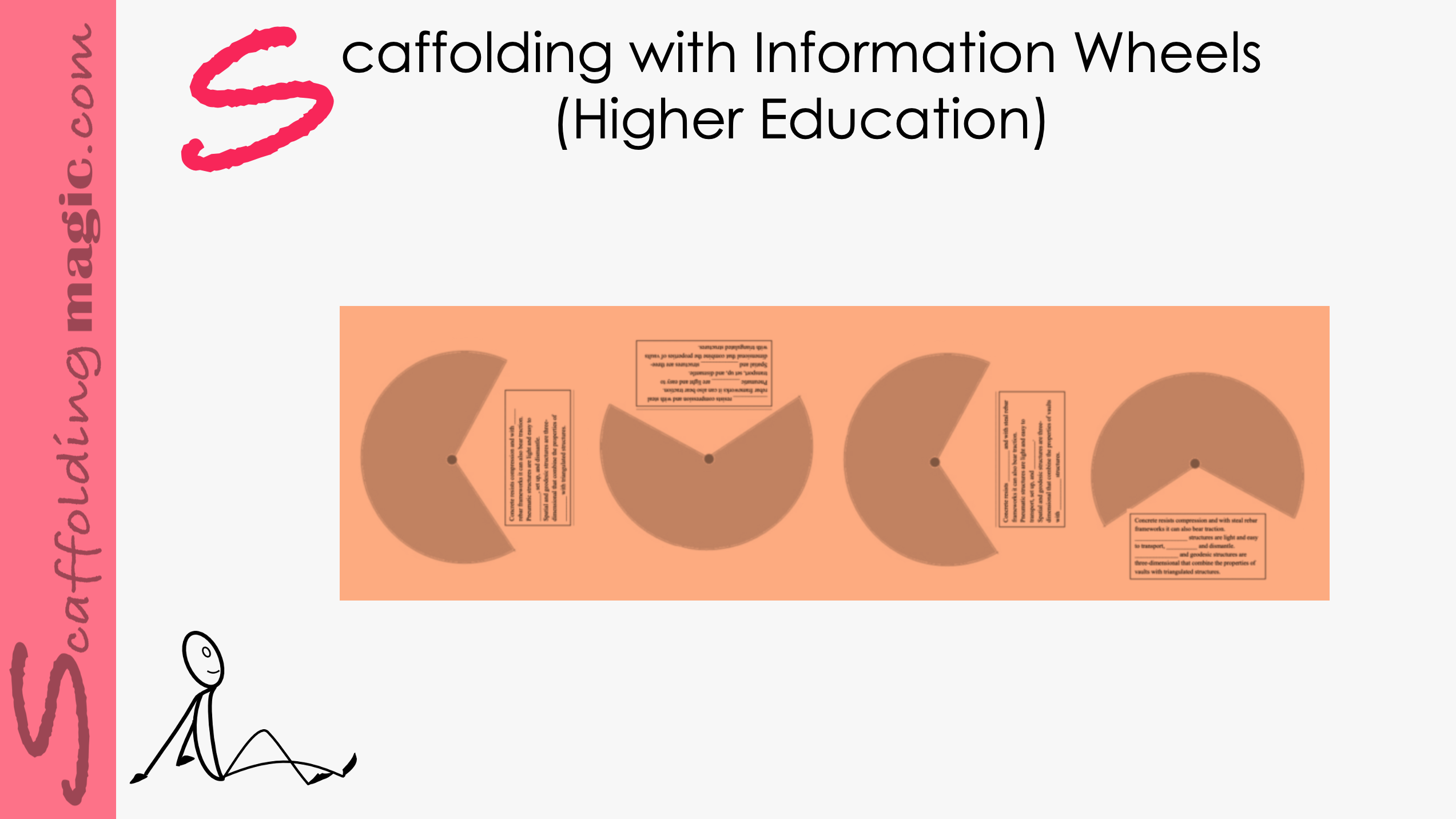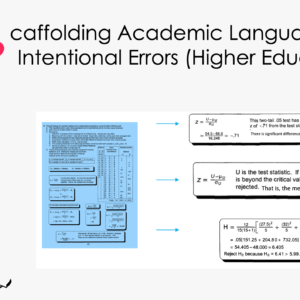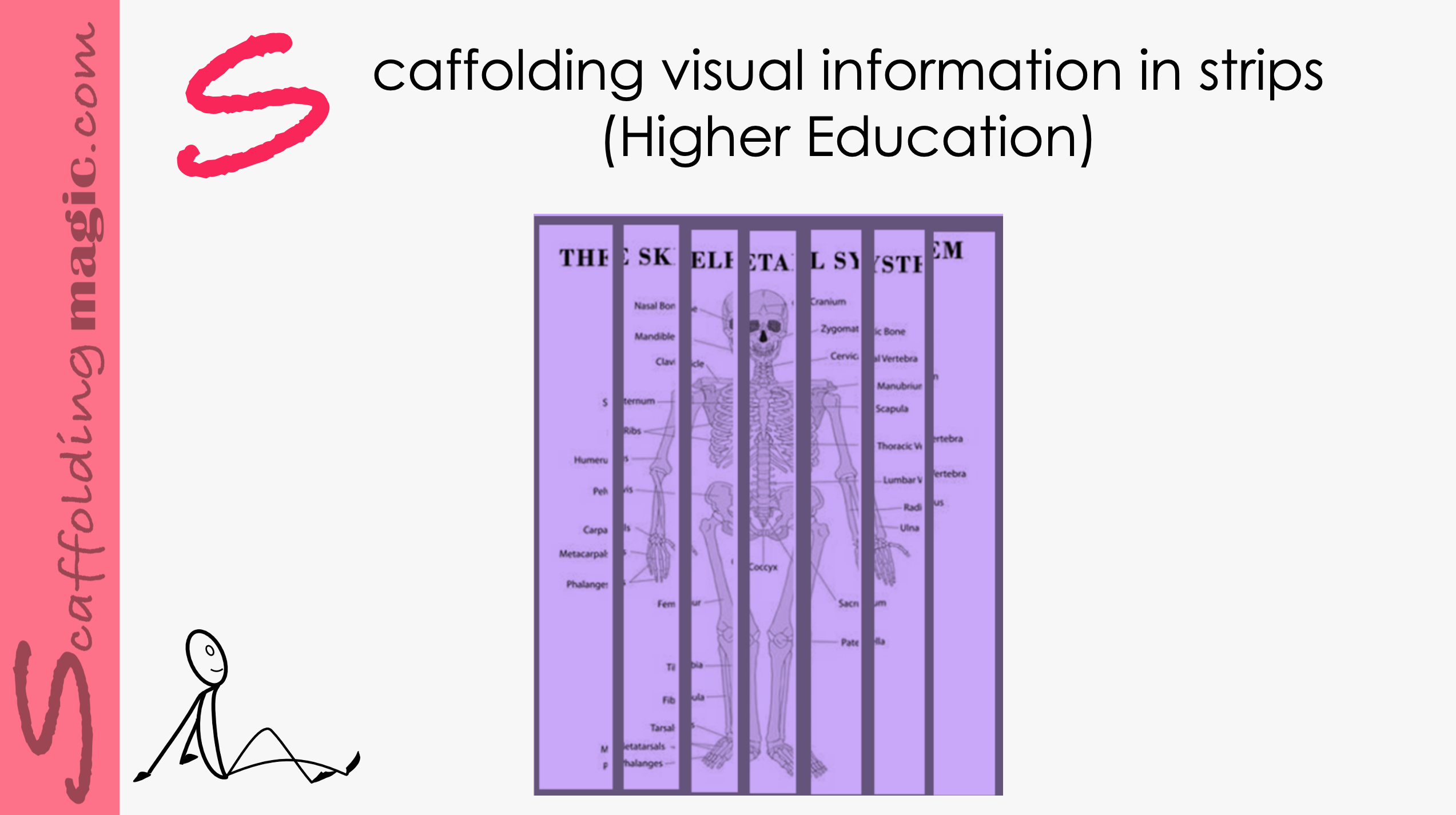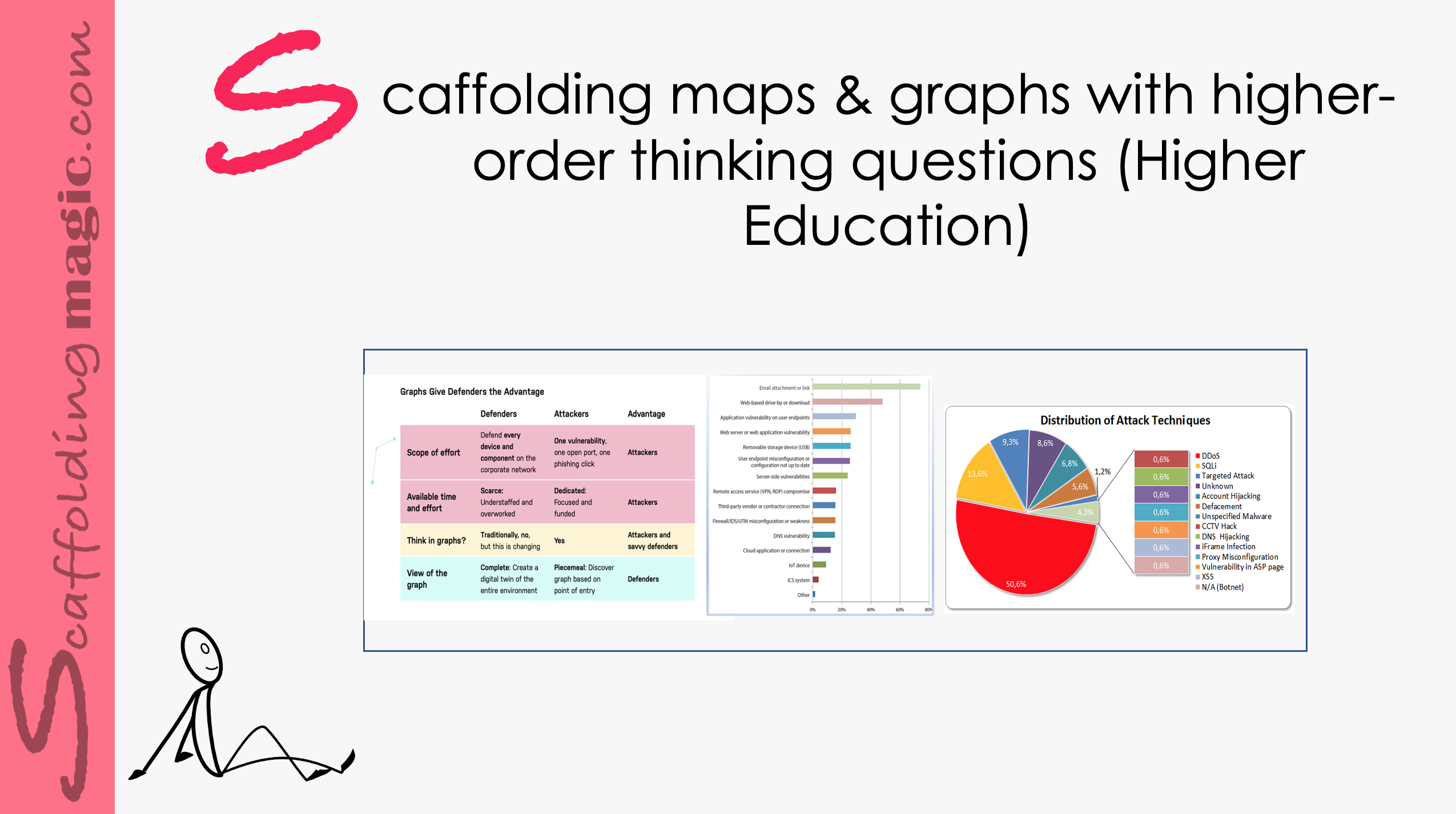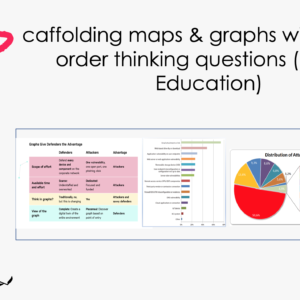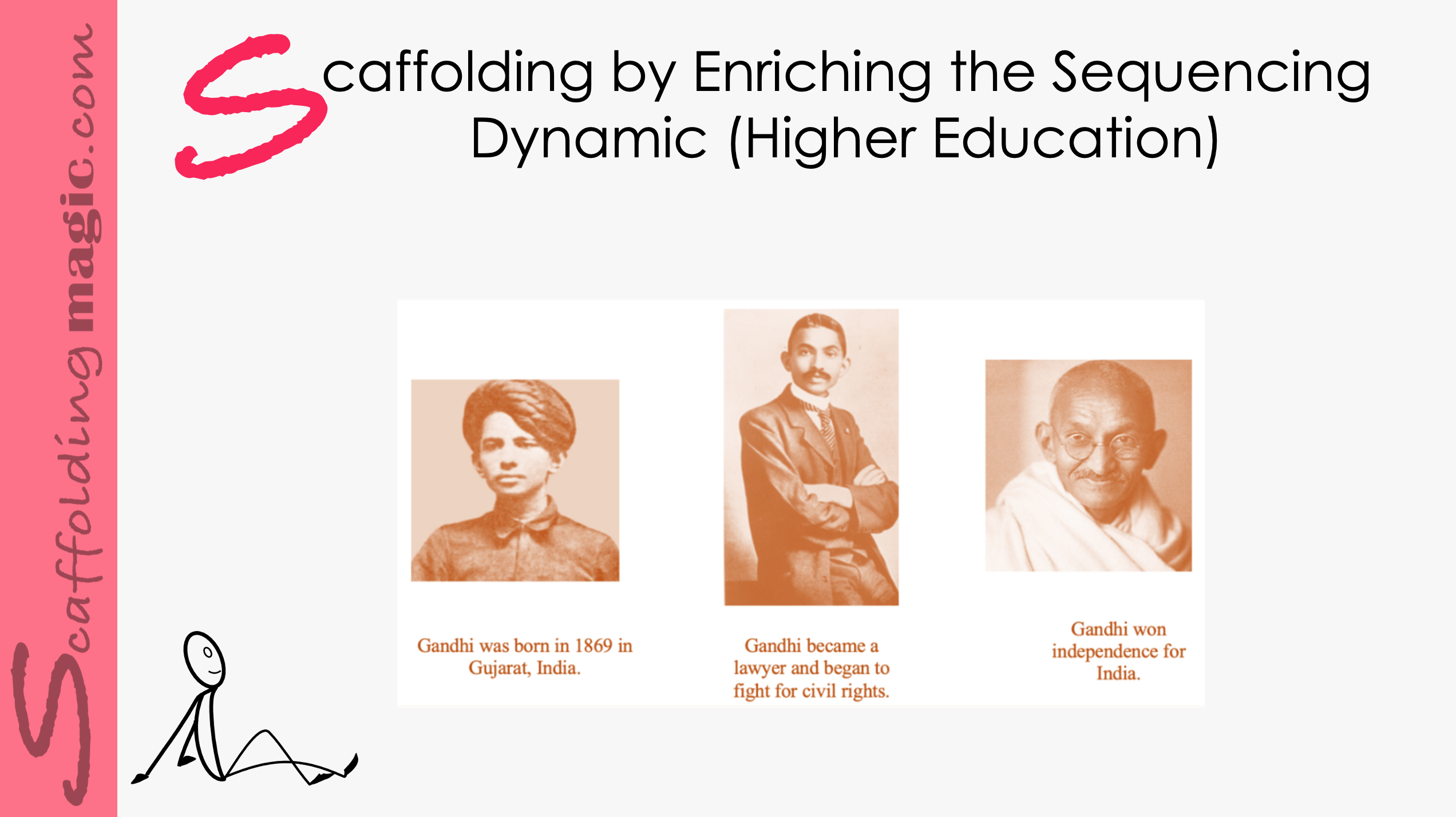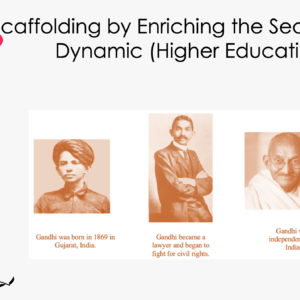Using information wheels in lessons is a wonderful way of honouring our students who need to learn through kinesthetic interaction. With information wheels, your students will use deductive reasoning, negotiate meaning, activate long-term memory, and learn new subject matter, all at the same time. Because they will be interacting with information with their hands, they’ll benefit from the essential transition from social-to-exploratory-to dialogic-to presentational-and…finally…to meta learning.*
Scaffolding with Information Wheels (Higher Education)
$5.00
Using information wheels in lessons is a wonderful way of honouring our students who need to learn through kinesthetic interaction. With information wheels, your students will use deductive reasoning, negotiate meaning, activate long-term memory, and learn new subject matter, all at the same time. Because they will be interacting with information with their hands, they’ll benefit from the essential transition from social-to-exploratory-to dialogic-to presentational-and…finally…to meta learning.*
Related products
-
Higher Education ScaffoldsQuick View
Scaffolding Academic Language – through errors (higher education)
$5.00 Add to cartRated 0 out of 5 -
Higher Education ScaffoldsQuick View
Scaffolding Visual Information in Strips (Higher Education)
$5.00 Add to cartRated 0 out of 5 -
Higher Education ScaffoldsQuick View
Scaffolding Maps and Graphs with Higher-Order Level Questions (Higher Education)
$5.00 Add to cartRated 0 out of 5 -
Higher Education ScaffoldsQuick View
Scaffolding by Enriching the Sequencing Dynamic (Higher Education)
$5.00 Add to cartRated 0 out of 5
Scaffolding Academic Language – through errors (higher education)
The brain sparks and grows when we make mistakes – even if we are not aware of it – because it is a time of struggle; the brain is challenged, and so this is when it grows the most.* Errors need to be celebrated in our classroom; we need to help our students to embrace the effort they make in their studies and focus on mistakes and successes alike, and not only the outcomes.
The brain sparks and grows when we make mistakes – even if we are not aware of it – because it is a time of struggle; the brain is challenged, and so this is when it grows the most.* Errors need to be celebrated in our classroom; we need to help our students to embrace the effort they make in their studies and focus on mistakes and successes alike, and not only the outcomes.
Scaffolding Visual Information in Strips (Higher Education)
When we add strategies in activities that promote critical thinking, collaboration, negotiation and prediction – all through visual means – we’ve created a powerful means of presenting new ideas to our students. This scaffold technique also includes categorisation which, according to Morton Hunt*, one of the pioneers of the study of the mind, has been proven to yield educational efficiency and helps the brain process information more fluidly.
Scaffolding Maps and Graphs with Higher-Order Level Questions (Higher Education)
Higher-order level questions – those that elicit deeper thinking – help students to stretch their thinking and engage their curiosity, their reasoning ability, their creativity, and independence. These questions encourage students to open their minds, they offer opportunities to produce original thinking.
Higher-order level questions – those that elicit deeper thinking – help students to stretch their thinking and engage their curiosity, their reasoning ability, their creativity, and independence. These questions encourage students to open their minds, they offer opportunities to produce original thinking.
Scaffolding by Enriching the Sequencing Dynamic (Higher Education)
Knowing the sequence of events in a text, story, video, laboratory experiment, sports competition, musical composition, preparation of art materials, etc. is an essential skill for students. This is an integral part of Pre-school and Lower-Primary school lessons, but it is often forgotten in higher grades. We need to intentionally give our students the opportunities to be able to recognise and express sequences, and we need to provide the phrases they can use to clarify the ordering of events.
Knowing the sequence of events in a text, story, video, laboratory experiment, sports competition, musical composition, preparation of art materials, etc. is an essential skill for students. This is an integral part of Pre-school and Lower-Primary school lessons, but it is often forgotten in higher grades. We need to intentionally give our students the opportunities to be able to recognise and express sequences, and we need to provide the phrases they can use to clarify the ordering of events.

